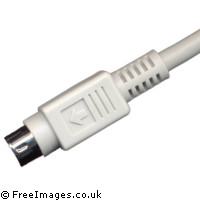EU-funded OMEGA project to develop user-friendly gigabit home networks
A home access network capable of delivering high bandwidth services and content at transmission speeds of one gigabit per second could soon become a reality thanks to a newly launched European research project. The EU-funded OMEGA project brings together 20 European partners from industry and academia with the common goal of developing a new global standard for ultra broadband home networks reaching one gigabit per second without the need to install new wires in homes. Currently home networks suffer from the fact that many devices are limited to wireless transmission rates of 54 megabits per second, or require troublesome wiring to achieve higher rates. Thus, these widespread home networks are at risk of becoming a bottleneck: when they are fed by high-speed optical access networks, they only offer transmission speeds of 100 megabits per second or more, both down- and up stream. The newly launched OMEGA project will seek to overcome these limitations by increasing the speed to one gigabit per second and by connecting home devices to the Internet and to each other through power line communications and wireless connections. This will put an end to the coverage limitations, as well as the wiring clutter, with the goal of giving users access to advanced information and communication services anywhere in their homes. The targeted services could include novel, new generation entertainment services such as telepresence, 3D gaming, enhanced interactivity, virtual reality, high-definition video as well as e-health applications and services for the exchange of user-generated business or multimedia content. In fact, OMEGA's vision is to make access to these bandwidth-hungry services as normal and convenient as obtaining water from a tap. 'Getting information, business, and entertainment services through the home network will become a self-evident utility, like, for instance, electricity, water, or gas,' says Jean-Philippe Javaudin, the OMEGA project coordinator from Orange Labs, France Telecom. In order to get there, OMEGA would like to not only increase transmission speeds, but also make the new generation of home networks easy to install and operate for ordinary users. For wireless connectivity within a user's house, OMEGA's home network solution will combine gigabit radio frequency and free-space optical links with power line communications,, thus creating a communication backbone without any new wires. 'Users will not need any new wires in their facilities to update towards the gigabit home network,' explains Martial Bellec, OMEGA's technical manager from Orange Labs, France Telecom. At the heart of the new system is a technology-independent media access control (MAC) layer. This layer controls the multiple technology gigabit network and provides services as well as connectivity to any number of devices in any room of the house or flat. Furthermore, this MAC layer will allow the service to follow the user from device to device. In order to make its vision come true, the OMEGA project will have to work on substantial technological challenges in the fields of optical wireless and wireless radio technologies, in protocol design, and in system architectures. OMEGA is an Integrated Project co-funded by the EU under its Seventh Framework Programme (FP7). It will run for three years from January 2008 to December 2010.



